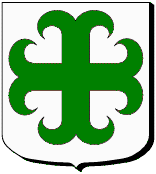"The city itself is quite unusual. It
rests within a
narrow valley, and
is built along the river with its back to the breathtaking chalk
cliffs. The narrowness of the valley has twisted Parravon into an
unusual shape, and the city is long and narrow following along the
river, with only three or four major thorough fares running lengthwise
along the city. The houses are narrow with multiple floors and the
streets are narrow cobblestone affairs, encroached upon by the cramped
houses. Some of the houses are built into the cliffs, and most have
cellars that are rented out. The northernmost part of the town is where
the docks are located, and as one heads south upstream the quality of
the housing improves, until one arrives at the southernmost portion
where the nobility live in their large and spacious estates surrounded
by their famous Parravonian gardens. Near the top of the cliff here
lies the palace of the Duc de Parravon, a wealthy and influential noble
who controls much of the area."
The smallest and quietest of Bretonnia's cities, Parravon is a
byword for sleepy provinciality. Its nobles are barely seen at court,
its inhabitants are for the most part inward-looking, reclusive, and
completely lacking in wanderlust. The city itself is beautiful, full of
character, and reknowned for its gardens, but few outsiders ever come
here for long. In some ways, however, these popular stereotypes are
very wide of the mark. The city's strategic position close to Axe-bite
pass makes it a key entry point to the kingdom from the Empire. There
is a small but significant Imperial immigrant community here, and the
city has a high military presence. Parravon's status as a backwater has
also made it a focal point for all sorts of malcontents anxious to
operate away from the eyes of the authorities and its developing print
trade has a disturbingly radical edge to it.
Royal Governor : Armand de Coquerone, Duc de Parravon
Other : Famous gardens, printing trade
 Parravon
Parravon
 Parravon
Parravon